How connected are we to our work?
Bridging the Gender Gap: Women in Construction

OSHAs Top 10 Standard Violations
Seeing the Light: Tintometer Earns Prestigious SHARP Award
The Ugly Truth about Heat Stress
MISSION STATEMENT:
Brian L. Warrick PhD, CSP, CIH Program Director, USF SafetyFlorida

How connected are we to our work?



As the program director for the USF SafetyFlorida Consultation Program, our mission of reducing workrelated illnesses and injuries is one I take personally. It means protecting the businesses and the people that make up the fabric of our communities. For many of us, our occupations are strongly connected to our self-esteem, social support, security, and health. Avoiding “bringing work home” may be easier in theory as, on average, we spend nearly half of our waking lives at work or engaging in work-related activities.1 I firmly believe scientific advancements in the field will only continue to further broaden the scope of occupational health and the relationship between work and health.
Throughout the recent public health crisis, we have seen many advancements in occupational health and safety. The pandemic has spurred technological innovations that continue to deliver the insights needed to protect employees better and evolve the theory and practice of Total Worker Health. Total Worker Health significantly impacts the well-being of workers across all age groups. As traditional occupational safety and health protection programs primarily emphasize the training and elimination of hazards at the workplace, the Total Worker Health approach prioritizes integrated interventions that collectively address worker safety, health, and well-being.
Despite studies focusing significantly on potential cost savings, many benefits are associated with adopting this approach. Research shows that employees in good physical, mental, and emotional health are more likely to deliver optimal performance in the workplace than employees who are not.2 Along with increased productivity, employers often accrue competitive advantages related to recruitment, retention, employee satisfaction, and improvements in work culture by including these external factors in their approach toward ensuring worker health.
1
2 Harvard Business Review (2013) The Impact of Employee Engagement on Performance https://hbr.org/resources/ pdfs/comm/achievers/hbr_achievers_report_sep13.pdf
A holistic view of the role of work on worker health will drive the future of workplace wellness. Employers that thoroughly investigate workers’ challenges and contribute to initiatives addressing worker safety and health challenges will significantly benefit. The USF SafetyFlorida Consultation Program remains committed to assisting employers and providing the resources to protect their most valuable asset—employees. I would like to personally thank you for your continued support of our annual publication, On-Site. With every issue, we hope to educate and inspire. We kindly ask that you join us in making Florida the safest state to work in. Our friends, our families, and our communities depend on you.
1 USF SafetyFlorida ON-SITE
USF SafetyFlorida Mission: Committed to reducing work related illnesses and injuries through onsite workplace consultation. To achieve its goal USF SafetyFlorida employs Creativity, Resourcefulness and Boldness.
U.S. Department of Labor, Bureau of Labor Statistics Average hours per day spent in selected activities on days worked by employment status and sex. 2021. https://www. bls.gov/charts/american-time-use/activity-by-work.htm
TABLE OF CONTENTS
On-Site magazine is published annually by USF SafetyFlorida, a small business safety and health consultation program funded by the Occupational Safety and Health Administration (OSHA) and Florida Department of Financial Services Division of Workers’ Compensation. The University of South Florida College of Public Health is the academic home for USF SafetyFlorida.

Program Director: Brian L. Warrick, Ph.D., CSP, CIH USF SafetyFlorida College of Public Health 13201 Bruce B. Downs Boulevard, MDC 56 Tampa, FL 33612-1105 1-866-273-1105 www.usfsafetyflorida.com warrickb@usf.edu


Editor in Chief: Thalia Barber tbarber3@usf.edu
Editor: Nicholas Girod ngirod@usf.edu


Designer: Martin Young martin@youngdesign.us
Reading this code with your smartphone, using QR code scanning software such as http://web.scanlife.com/en/ download-application, will enable you to go directly to the USF SafetyFlorida website.



2
1 3 5 7 9 11 13 17 19 21 22 Program Director’s Column From The Editor’s Desk USF SafetyFlorida News USF OTIEC News Think SHARP Sunshine State Safety Recognition Award Features What We See Tools and Resources By The Numbers Who We Are
COVER PHOTO CAPTION: 17 10 6 11
Thalia Barber, BS Communications & Marketing Officer, USF SafetyFlorida Editor in Chief, On-Site Magazine
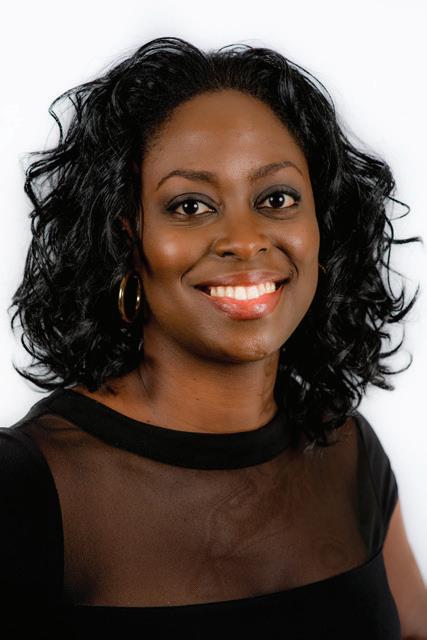
Bridging the Gender Gap: Women in Construction
Men have long dominated the industry of Construction for many years. The scarcity of women and gender bias in this industry has significantly contributed to a lack of inclusion and diversity. However, the construction industry has seen an uptick in the workforce participation rate of women in construction-related jobs.
Women working in Construction accounted for 1.6% of the entire U.S. workforce in 2019.3 On average, women in the U.S. earn 81.5 percent of what men make. The gender pay gap is significantly smaller in construction occupations, with women earning, on average, 94.3 percent of the earnings of their counterparts.4
More still needs to be done to integrate women into the industry fully. As the number of women entering the construction field grows, the misconceptions many once had about genderspecific roles are slowly becoming a thing of the past as more construction companies are witnessing firsthand how retaining more women in the workforce can have significant economic benefits. According to a McKinsey & Co. report, gender-diverse companies are 25% more likely to achieve above-average profitability than companies with less diversity.
Other barriers to women in construction include but are not limited to the need for training and education programs that help increase awareness of internship and apprenticeship opportunities and careers and other female role models that can serve as mentors and advocates.
A couple of organizations keep women top-of-mind and provide support and resources. Organizations like the National Association of Women in Construction (NAWIC) and Women Construction Owners and Executives (WCOE) offer networking, training, and mentoring opportunities for women new to the industry.
The University of South Florida (USF) SafetyFlorida Consultation Program is an additional resource that supports women in construction. We believe that all workers have a right to safe and healthy workplaces. We provide consultative services, training, and assistance to workers and employers.

If you are ready to take the next step toward safety in your business, contact USF SafetyFlorida at 1-866-273-1105. Our services are free and confidential. We can help. Visit the USF OTI Education Center’s page for other valuable worker protection outreach training.
3 Source: https://www.bls.gov/opub/reports/womens-databook/2020/ home.htm, Bureau of Labor Statistics, Women in the labor force: a Databook, Table 13 - Employed people, by industry and gender, 2018 and 2019 annual averages.
4 Source: Bureau of Labor Statistics, Women in the labor force: a Databook, Table 19 -Median usual weekly earnings of full-time wage and salary workers, by industry and gender, 2019 annual averages. https://www.bls.gov/opub/reports/womens-databook/2020/home.htm, Table 19
Free On-Site Safety and Health Services for Small Business

Do you worry that a serious workplace injury could disrupt or even shut down your business? Can’t afford to hire a safety consultant?
If so, USF SafetyFlorida’s FREE and CONFIDENTIAL On-Site Safety and Health Consultation may be perfect for you!
On-Site Consultation services are separate from enforcement and do not result in penalties or citations.
At your request, a consultant from USF SafetyFlorida will visit your workplace to help you identify hazards and make recommendation on possible solutions.
3 USF SafetyFlorida ON-SITE
From The Editor’s Desk



Two ways USF SafetyFlorida’s partnership with FDWC can save your bottom line
USF SafetyFlorida has continued its partnership with the Florida Division of Workers' Compensation (FDWC) to offer seminars and webinars on Florida Workers’ Compensation Law and Workplace Safety. These free and educational classes are held throughout the state. Webinars are provided quarterly. In-person seminars are conducted upon request.
The USF SafetyFlorida Consultation Program is an integral part of the educational program. Maintaining our presence at the seminars and webinars helps round out the discussion of the law’s requirements and what resources are available to small businesses.
The Division of Workers' Compensation is part of Florida's Department of Financial Services and handles workers' compensation claims for injured or killed employees.


Note: The Division’s trust fund adds a 10 percent matching grant to the federal government’s funding ofthe USF SafetyFlorida Consultation Program.
OHNP students receive benefits from field experience
One Occupational Health Nursing Student documents her experience participating in the USF SafetyFlorida field experience program. She learned firsthand about the benefits of the On-Site Consultation Program and the potential health risks associated with workplace hazards. Jennifer Burgos shadowed USF SafetyFlorida’s Safety and Health Consultant, Garrick Johnson, MSPH, CIH, out in the field during an on-site consultation at a manufacturing site in the Tampa Bay area. The field experience gives students more insight into the connection between occupational health nursing and physical factors in the workplace.
Jennifer said, “The experience was beneficial because it helped me to know more about the many regulations required to maintain safety protocols and how they are implemented.” “Likewise, the experience gave me better insight into how I, as an OHNP student, can assist in the policy and prevention.”
This is the 13th year students from the graduate program have participated in the shadowing field experience.
USF SafetyFlorida honors lost workers

Each year, on April 28th, the nation recognizes Workers' Memorial Day to honor those who lost their lives on the job and the impact these tragic losses have on families and communities. Many workers were injured, sickened, or died from just going to work.
Every year, more than 5,000 workers are killed (an average of 14 deaths per day), and more than 3.6 million suffer serious job-related injuries or illnesses. Even one serious workplace injury or illness can have a devastating impact on a small business. (osha.gov, 2022)
Implementing a safety and health program is crucial to preventing workplace accidents and keeping the costs associated with workers’ compensation premiums and medical and legal fees to a minimum. On April 28, 2022, the USF SafetyFlorida Consultation Program partnered with the OSHA Training Institute Education Center and Sunshine ERC to provide participants with complimentary occupational safety and health training. The OSHA 7500: Introduction to Safety and Health Management Systems training course covered effectively implementing a company's safety and health management system. It also addressed the four core elements of an effective safety and health management system and those central issues that are critical to each element's proper management. The training was interactive and focused on class discussions and workshops. The training was attended by 33 health and safety industry professionals from various industries.
Powered Industrial Trucks Seminar
Powered industrial trucks are used in many industries to move material, raise, lower, or remove large objects, boxes, crates, or other containers. There are many types of powered industrial trucks, with each type presenting different operating hazards. Workers who operate or work near forklifts are often at risk of being struck or crushed by the machine or the load being handled.
The USF SafetyFlorida Consultation Program joined forces with the USF OTI Education Center and Sunshine ERC to offer a seminar focused on Powered Industrial Trucks, one of OSHA’s top 10 most frequently cited hazards.
The seminar led by USF SafetyFlorida's Garrick Johnson, MSPH, CIH aimed to increase awareness of these hazards and prevent unnecessary injuries and fatalities. Discussions centered around informing attendees about OSHA's Powered Industrial Truck requirements, mechanical equipment use, general housekeeping tips, guarding, and industry best practices.

5 USF SafetyFlorida ON-SITE USF SafetyFlorida News
OSHA Reveals Top 10 Standard Violations for FY 2021
Each year OSHA publishes a list of the top 10 most frequently cited standards following inspections of worksites by federal OSHA. OSHA publishes this list to alert employers to these commonly cited standard violations. Employers are encouraged to use this list to guide preemptive action toward finding and fixing these hazards.

1. Fall Protection, Construction (29 CFR 1926.501)
2. Respiratory Protection, General Industry (29 CFR 1910.134)
3. Ladders, Construction (29 CFR 1926.1053)
4. Hazard Communication, General Industry (29 CFR 1910.1200)
5. Scaffolding, Construction (29 CFR 1926.451)
6. Fall Protection Training, Construction (29 CFR 1926.503)
7. Control of Hazardous Energy (lockout/tagout), General Industry (29 CFR 1910.147)
8. Eye and Face Protection, Construction (29 CFR 1926.102)
9. Powered Industrial Trucks, General Industry (29 CFR 1910.178)
10.Machinery and Machine Guarding, General Industry (29 CFR 1910.212)
*Top 10 most frequently cited standards by Federal OSHA in fiscal year 2021 (October 1, 2020, through September 30, 2021).
Creating impactful OOH advertising
Consumers are spending more time traveling and venturing outside of their homes. It is estimated that consumers spend, on average, 70% of their time outside of the house, and 68% of mobile usage is done on the go. USF SafetyFlorida Consultation Program has leveraged this fact to create meaningful and impactful campaigns to reach consumers. The program connected with OutFront Media to launch an innovative marketing campaign. Our Out-of-Home Advertising (OOH) is vital in our marketing mix and focuses on building brand awareness and recognition and keeping our program top of mind with potential clients. The general public is constantly evolving in how they consume media and communicate. A design that integrates an eye-catching aesthetic with an impactful message drives success on and offline.
Our billboards also incorporate proximity-based mobile technology (geofence) to expand our reach and create new engagement opportunities. We maintain a digital presence in local communities, whether they are at home, on the go running errands, while on their way to work, or even out for exercise.

USF SafetyFlorida’s Commitment to Total Worker Safety and Health

The nucleus of USF SafetyFlorida’s goal remains total worker safety and health and improving the bottom line for small business owners and employers alike. We can accomplish this by offering nocost, confidential occupational safety and health services to small and medium-sized businesses in Florida. Our consultants have years of experience and can assist you with identifying workplace hazards, providing advice for compliance with OSHA standards, and assisting in establishing and improving safety and health programs.
USF SafetyFlorida focuses our training and education outreach efforts on small and medium-sized businesses in predominately high-hazard industries. We often partner with like-minded organizations, such as safety councils and associations, to deliver state-of-the-art training, provide educational resources, and conduct safety and health presentations.
During the fiscal year 2021-2022, USF SafetyFlorida and its partners offered the following complimentary activities to help sustain stronger, safer, and healthier communities:
• Landscaping and Horticulture Safety Webinar
• National Fall Safety Stand-Down (English)
• National Fall Safety Stand-Down (Spanish)
• Powered Industrial Trucks Seminar
• Safe + Sound Week
• Workers’ Memorial Day
• Workplace Ergonomics Seminar
Over the Airwaves
The message of total worker health and safety can be heard across many public media stations to an audience of more than 1.6 million people all over Florida, from Tampa and Orlando to Jacksonville and Miami. Our simple call to action, “USF SafetyFlorida committed to reducing work-related illnesses and injuries for Florida’s small business,” permeates the airwaves.
Here at USF SafetyFlorida, we know that danger does not discriminate. That is why we have taken an omnichannel approach to achieve our goals of keeping workers safe and helping businesses remain profitable. We could not ignore the opportunity to reach our target audienceFlorida’s small business communitythrough a media channel that informs and inspires change.
Next time you turn on the radio, tune into your local NPR radio station and take a listen.
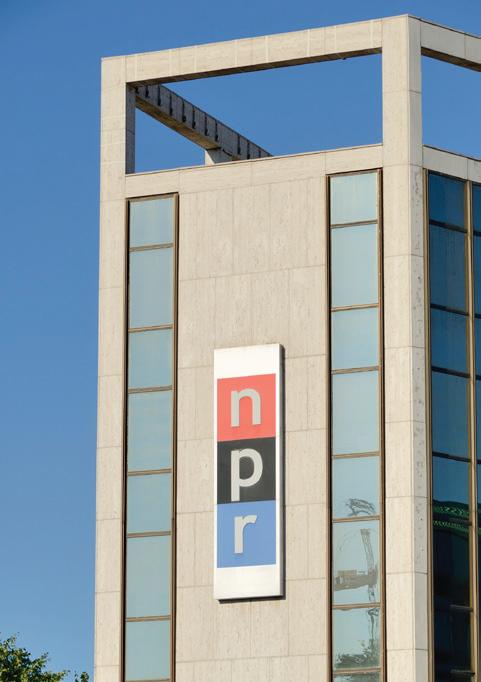
6
The USF OSHA Training Institute Education Center: Florida's Workplace Safety Training and Continuing Education Resource
The University of South Florida (USF) OSHA Training Institute Education Center (OTIEC) is headquartered in Wesley Chapel, Florida. The center is part of a national network of non-profit organizations authorized by the Occupational Safety and Health Administration (OSHA) to deliver occupational safety and health training to private and public-sector (including military and other Federal agencies) workers, supervisors, and employers on behalf of OSHA.
Services provided
The USF OTIEC serves the Southeast (Alabama, Georgia, Florida, Kentucky, Mississippi, North Carolina, South Carolina, and Tennessee) and beyond to support the overall mission of reducing workplace accidents and injuries by training workers, employers, and safety professionals on hazard recognition and avoidance. The education center is the leading institution in Florida authorized to deliver this training. The USF OTIEC invites you to experience what sets the Education Center apart from other training providers.
Creating Safe, Skilled Workers
USF OTIEC has collaborated with the Corporation to Develop Communities of Tampa to train unemployed/underemployed residents of Hillsborough County with the skills needed to conduct remediation work safely.

Certificate Program
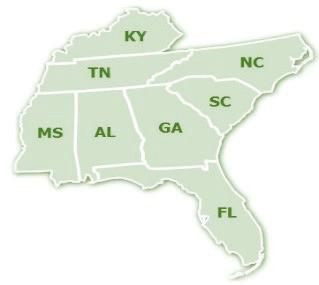
Regardless of your educational background, the USF OTIEC Certificate Program provides experienced and newer safety professionals with essential workplace knowledge and practical experience regarding health and safety standards. Participants will enjoy a fulfilling learning experience and gain the skills necessary to create solutions for workplace safety challenges. The USF OTI Education Center currently offers the following certificate programs:
• Professional Certificate for General Industry

• Professional Certificate for Construction
• Professional Certificate for Maritime
• Safety & Health Fundamentals Certificate Program for Construction
• Safety & Health Fundamentals Certificate Program for General Industry
Please visit USF OTIEC’s website for additional information about the Certificate Program: https://www.usfotiec.org/certificate-program/.
7 USF SafetyFlorida ON-SITE
USF OSHA Training Institute Education
News
Center
Outreach Training Program
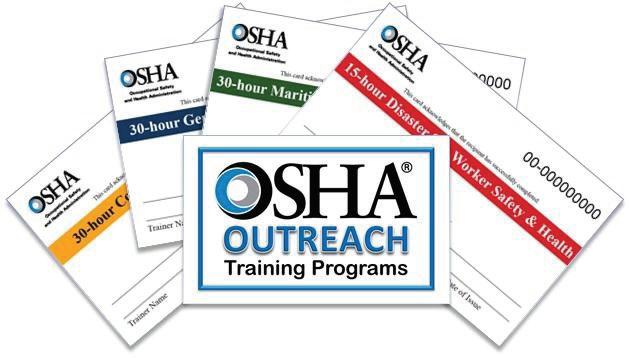
The USF OTIEC supports the Voluntary OSHA Outreach Training Program by offering trainer courses and processing trainer requests for course completion cards in construction, maritime, general industry, and disaster site workers. The Outreach Training Program is a voluntary program in which OSHA does not require a mandate, nor does it fulfill any OSHA requirements. However, the outreach program can provide fundamental safety and health information and education. Through the outreach program, safety professionals can be authorized to deliver 10-hour and 30-hour training classes on the recognition, avoidance, abatement, and prevention of workplace safety and health hazards. The program also provides information about workers’ rights, employer responsibilities, and how to file a complaint. It is important to note that this is a voluntary program and does not meet training requirements for any OSHA standards. Although some states, municipalities, or organizations may require outreach training as a condition of employment, it is not an
Training Delivery Formats
USF OTIEC offers online courses (in English and Spanish), virtual instructor-led training (VILT), and a classroom-style setting. Choose the format that matches your needs and preference. VILT is a new format that many students find beneficial. The benefits include reduced travel time, cost savings, the ability to attend the course from anywhere (with an internet connection), convenience, and accessibility of technology for training.

Schedule a Contract Course
If your company is interested in requesting a contract course for any safety and health training, please complete the Contract Course Request Form on our website, www. usfotiec.org, or email the Contract Coordinator directly (flc@ usf.edu).
Note: Contract courses must have a minimum of 10 individuals and a maximum of 30.

Think SHARP
Exemplary Safety and Health Equates to Prestigious SHARP Certification
What is SHARP?
The Safety and Health Achievement Recognition Program Award to identifies small business owners who operate an exemplary safety and health program. Acceptance into SHARP by OSHA is an achievement of status that will single you out among your business peers as a model for your worksite safety and health and will reap the rewards for your business. Upon receiving SHARP recognition, your worksite will be deferred from OSHA-programmed inspections during the period that your SHARP certification is valid.
How can your company become SHARP?
Companies interested in pursuing SHARP status must first request a comprehensive consultation visit that involves a complete hazard identification survey from USF SafetyFlorida. Other qualifying requirements for the SHARP program include:
• Involve employees in the consultation process.
• Correct all hazards identified by the consultant.
• Implement and maintain an effective safety and health program.
• Agree to call and notify USF SafetyFlorida prior to making any changes in the working conditions or introducing new hazards into the workplace.
• Have fewer than 250 employees on-site and fewer than 500 employees corporate-wide.
SHARP Renewal
If a company wishes to renew its SHARP certification, the application process must begin during the last six months of its exemption period. The company must also undergo a comprehensive visit by a USF SafetyFlorida consultant to ensure its SHMS has improved or maintained. Furthermore, the employer must meet all SHARP eligibility requirements, agree to conduct self-evaluations and provide a written report based on the elements of OSHA 1989 Safety and Health Program Management Guidelines and OSHA’s required injury and illness logs.
SHARP Deferral
If a business meets most but not all of OSHA’s SHARP eligibility requirements, a USF SafetyFlorida consultant may recommend a business for an inspection deferral of up to 18 months, provided the company has:
• Completed a hazard identification survey with a USF SafetyFlorida consultant and corrected all identified hazards.
• Implemented, demonstrated, and maintained an SHMS that, at a minimum, addresses the major elements of OSHA’s 1989 Safety and Health Program Management Guidelines.
• Implemented an action plan with established abatement dates that completes the necessary items that prevented the company from reaching SHARP status during the original survey.
Florida’s SHARP Companies
This year 7 Florida companies qualified for OSHA’s SHARP award.

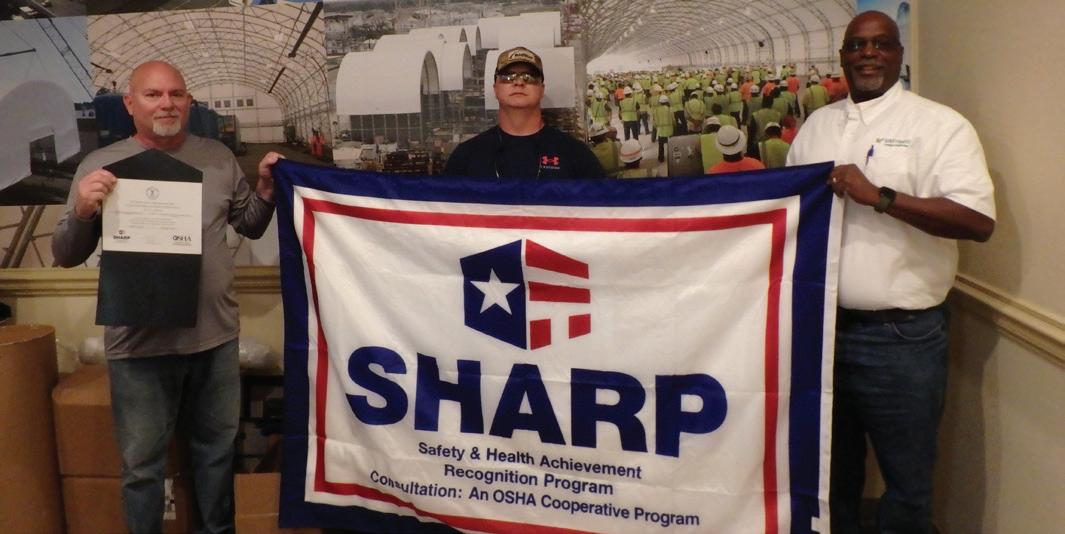
(P) American Thermoplastic Extrusion Company (ATECO)
(R) Big Top Manufacturing, Inc.
(R) Canterbury Towers, Inc.
(N) Planet Stone Marble & Granite, Inc.
(N) Stiles Corporation/Stiles Construction – Plantation (SHARP Pilot)
(N) Stiles Corporation/Stiles Construction – Sunrise (SHARP Pilot)
(R) Tintometer, Inc.
SHARP Key:
(N) = new, (R) = renewal, (D) = deferral, (P) = Pre-Sharp
Ready to become SHARP? Contact USF SafetyFlorida at (866) 273-1105 or visit us online at www.safetyflorida.usf.edu to request a free on-site consultation.
9 USF SafetyFlorida ON-SITE
An exclusive interview with Brasfield & Gorrie’s Nayo Joseph, Project Manager
To get a peek into one woman’s experience as a leader in the construction industry, I sat down with Ms. Nayo Joseph, Project Manager for Brasfield & Gorrie. Ms. Joseph completed her civil engineering degree in 2019. Following graduation, she interned with Brasfield & Gorrie and landed the position of Assistant Project Manager. She is now the Project Manager for the firm.


What does your role entail?
As an assistant project manager, I ensure everyone on the Jobsite can access the information needed to build the job. This includes document control, walking the job and ensuring things are in place per the contract documents, ensuring only approved products are used, updating plans, and getting questions from subcontractors about scope gaps or possible changes answered.
I also assist the senior project manager in managing the budget, getting subcontractors paid, and ensuring the owner is happy and informed about the job. I do much coordination with the field staff, architects, engineers, owners, and, depending on what is being built, the directors of the facility to make sure everything is built correctly, materials are getting to the job site on time, and existing facilities are not being negatively impacted.
Why did you choose construction?
As a child, I loved building houses on Sims and making floor plans using clipart! As I got older, I continued to gravitate toward building. I studied Civil Engineering in college and found that my favorite courses involved construction. When I got an internship as a project management intern before graduating, I found something that clicked with my interests. I love the personal interaction and collaborative environment that construction requires. It feels incredible to drive by a building and know you had a hand in creating something that people will continue to use and enjoy.
What has been the most challenging part of working in a predominantly male-dominated industry?
The hardest part of working in a predominantly male industry is not letting this fact keep you from your goals. When we often go into an uncomfortable situation, it is easy to dwell on what makes us uncomfortable and lose sight of our goals. In this industry, speaking up, asking questions, and learning as much as possible from everyone around you is crucial because the more knowledgeable you are, the harder it is for someone to shake your confidence. I am lucky to work for a company that has and continues to make an effort to increase gender diversity. I genuinely believe I have come into the industry at a time when I may not face as many genderspecific hardships as others before me.
- BY THALIA BARBER
Have you ever experienced gender bias in the workplace?
I have not noticed a great deal of gender bias in the workplace. I do recall a couple of times I reached out to a subcontractor to ask a question, and instead of answering me, they contacted my male boss for more information. I remember calling them back and re-asking the question, and they got the hint. It is also nice to have a good support team who will back you up in instances like this and not encourage dismissive behavior.
What qualities have helped you succeed in the construction industry?
Having a “thick skin” is very necessary for the construction industry. As job schedules get tighter and building requirements become more stringent, emotions are bound to run high during a project. Communicating with your team and not taking things too personally will help you maintain a good mental state.
Communication is also a big one. Most of our work involves clear communication, so being open and keeping everyone in the loop, even if you did something wrong, can make or break a project and relationships.
Respect for others is essential in this industry because the construction world is very small, and you will, more likely than not, see the same people on another job in the future. Treating people fairly and respectfully builds a teamwork-centered work environment where people look out for each other and focus on the job’s success rather than their individual parts, which sometimes conflict and require compromise.
What advice would you give other women considering working in the industry?
I say do it! If you love being social, seeing things progress in front of your eyes, and being part of contributing to the built environment, construction may be for you. Do not be discouraged by the fact that the industry is male-dominated because times have and are continuing to change, and it is very rewarding to be a part of that change.
10
Spotlight on Women
in Construction
“I find it very important to speak up, ask questions, and learn as much as you can from everyone around you.”
Safety Recognition Award
Commitment to Safety Culture and Teamwork Make the Difference
Asingle accident in the workplace can significantly impact your business and your bottom line. The cost of OSHA citations, workers’ compensation claims, low employee morale, and lost productivity are costly and can be the defining factor for a small business to remain open. If you ask any successful owner of a high-risk industry business their advice on keeping incident levels low, their answer will most likely be increased employee involvement to cultivate a positive safety culture and safe working environment. As Dr. Peter Drucker said, “The first line of business is not the maximization of profit, but the avoidance of loss.” Employers’ and employees’ commitment to safe and healthful workplaces is the reason USF SafetyFlorida created the Sunshine State Safety Recognition Award.
Created in 2006, the Sunshine State Safety Recognition Award commends employers and employees across all industries who proactively and routinely engage in job safety. 12 firms earned this honor in FY 2021-2022. Those firms were recognized for implementing good safety initiatives to protect employees on the job better. USF SafetyFlorida believes that teamwork is essential in accident prevention. When there are open lines of communication between workers and management, it enhances a company’s commitment to safety.
To qualify, a business should request and receive a complete on-site consultation survey and employ at least one person at the worksite to be evaluated. Additionally, the company should have no willful, repeat, or willful-repeat citations within 24 months of the consultation and no serious citations related to injury or exposure within 12 months.
During the consultation, a safety consultant will comprehensively evaluate your safety and health programs. The consultant will also speak with workers and evaluate the work area. The safety consultant will review the following:
• Assessment of safety and health hazards
• Evaluate written programs and administer oversight
• Evaluate safety and health management practices
• Provide formal and informal safety training
• Assessment of internal safety inspection routines to include chemicals, processes, and equipment
If hazards are identified during the visit, an abatement of those specific hazards must take place before recognition is granted. Once initial and final consultations are complete, a safety consultant may decide to formally recommend the firm for a Sunshine State Safety Recognition Award approved by USF SafetyFlorida management. A formal letter of commendation is sent to the company, recognizing the employers’ and employees’ efforts in implementing and maintaining an effective injury and illness prevention program.
Chris-Tel Company of Southwest Florida, Inc.
– Cypress Cove Project
First Florida Constructors, LLC
– Avalon Merrick Park Project
First Florida Constructors, LLC
– Avery II Project
First Florida Constructors, LLC
– Lil Abner Project
First Florida Constructors, LLC
– Project O
First Florida Constructors, LLC & Formcrete – River North Apartments
First Florida Constructors, LLC – Sovereign Apartments Project
Grace Construction Consultants, LLC
1901 Project
OHL, USA, Inc. – #513 Milling and Resurfacing Coral Ridge Drive
Resia Construction, LLC
– Biscayne Village Project
Resia Construction, LLC
– Pine Ridge Project
Sacyr Construction USA, LLC
– I-75 Project
Stiles Construction
– Sunrise Municipal Complex Project
The Conlan Company
– Amazon Warehouse Project
The Conlan Company – PBI-3 Port St. Lucie Project
11 USF SafetyFlorida ON-SITE
USF Sunshine State
–
The Fiscal Year 2021-2022 Sunshine State Safety Recognition Award recipients include:




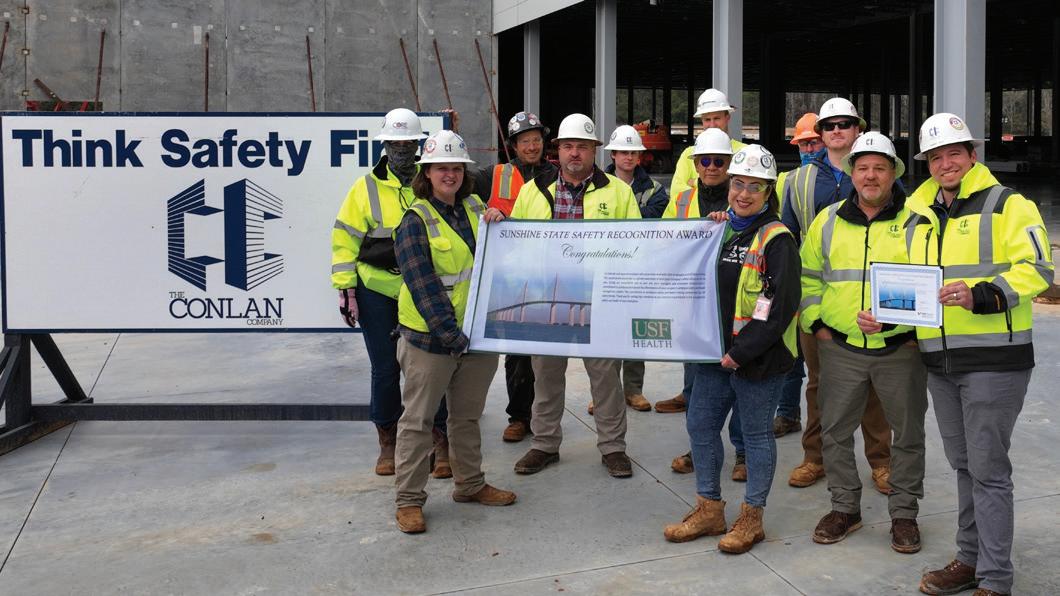

12
USF SafetyFlorida developed the Sunshine State Safety Recognition Award to motivate and support employers who demonstrate a commitment to continuously improve their workplace safety and health management system.
Chris-Tel Company of Southwest Florida, Inc – Cypress Cove Project
First Florida Constructors, LLC – Avalon Merrick Park Project
First Florida Constructors, LLC – River North Apartments
Resia Construction, LLC – Biscayne Village Project
The Conlan Company – Amazon Warehouse Project
How is the Hazard Recognition Process at Your Company?

As an employer, what have you done to train or educate your workers on hazard recognition? Maybe you have had many employees take the OSHA 10-hour construction or general industry course online or through an authorized instructor. You may have provided some hazard recognition through regularly conducted safety talks/meetings (toolbox talks). If you are a subcontractor in the construction industry, have provided little to no toolbox talks or safety meetings, and have relied on the general or residential building contractor to conduct monthly job site meetings for your workers to possibly gain some hazard recognition.
What are the results after providing some or maybe quite a bit of hazard recognition training to your workers? Have minor or serious injuries occurred? Have outside safety and health inspection personnel or other personnel (in construction, other personnel might be the general contractor superintendent, assistant superintendent, or project manager) identified hazards that your personnel did not observe or recognize? If the answers to any or all these above questions are “yes,” did you conduct a root cause assessment to understand why and how such incidents occurred? If you did not conduct such an assessment, why not? Don’t you want to find out why and how these injuries, near-hits, or identified hazards occurred so that you can prevent further injuries and hazards that can lead to serious or fatal/catastrophic occurrences?
OSHA recently cited a contractor in southwest Florida for approximately $41,000 from an inspection after two workers fell about 25’ when the scaffold platform they were on failed. One of the workers was killed; the other worker was seriously injured. Nine (9) of the citations involved the construction scaffold standards; two (2) of these citations involved the lack of training for those using or erecting scaffolds, and one (1) citation involved the lack of inspection of scaffold components before each work shift. The questions one might ask for further assessment of this tragic incident might be: OSHA cited a lack of scaffold training; however, were these workers OSHA 10-hour construction outreach cardholders? Had either of these workers ever attended a safety meeting/toolbox talk where the topic included safe scaffold use and related hazard recognition? If the answer to these proposed questions is “yes,” there are deeper reasons, i.e., root causation factors related to this tragic incident.

Many workplaces, especially in commercial construction, have adopted daily pre-job safety briefings and job safety analysis— where the work crew will briefly discuss the day’s task(s), the potential hazards, and the controls of these hazards. These may or may not be documented, and these briefings may or may not be required by the general or building contractor. When such briefings are not perfunctory and truly engage the crew to address the day’s task(s) and include potential hazards and the controls of these hazards, these have been shown to mitigate serious incidents. Consider the benefits of these daily briefings: They gain the participation of those performing the work and offer the opportunity to gain insight into the tools, equipment, and process they will be performing, as well as the safeguards associated with the work.
Patrick Stark, CHST, PCC, PCG, Safety Consultant, USF SafetyFlorida
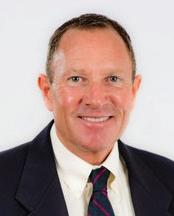
A recent article in the American Society of Safety Professionals (ASSP) monthly magazine, “Professional Safety,” discussed hazard recognition, predominantly in pre-job briefings/meetings. The article was based on research conducted on hazard recognition and discovered that workers usually identify about 45% of hazards but fail to recognize more potential hazards. This can be due to how the brain functions and those hazards related to the fight-or-flight area of the brain are the most readily recognized (and this may have little to do with any previous hazard recognition training). Workers tend to “recognize hazards associated with gravity and motion such as falls from height, suspended loads, uneven work surfaces, and mobile equipment. However, hazards associated with other forms of energy, such as tension, compression, chemical, temperature, and radiation, are more commonly missed. These trends transcend industry, trade, age, and experience level.”
This article impressed upon not inundating the workforce with a new and improved job site/workplace daily briefing process (if one is already in place), but instead introducing other hazardous energy sources to the workforce so they might consider these, as applicable, during these briefings. These hazardous energy sources are known as “The Energy Wheel” and include the following ten (10) energy categories: gravity, motion, mechanical, electrical, sound, pressure, temperature, chemical, radiation, and biological.
Establishing and improving daily pre-job briefings/discussions and then applying these ten categories into the mix, hazard recognition, and the resultant controls can benefit the safe production process.
The USF SafetyFlorida Consultation Program provides free, confidential compliance assistance to Florida’s small, high-hazard, private-sector employers to keep workers safe. Even potentially fatal hazards can hide in plain sight to the untrained eye. Our experts have 150 years of combined occupational health and safety leadership experience and come from various industries, such as the private manufacturing, construction, and mining sectors and the federal government. To request a free consultation, please visit https://www.tfaforms.com/4696809 or call toll-free (866) 273-1105.
13 USF SafetyFlorida ON-SITE
Feature I
What experts are saying about Poison Control
While most poison exposures occur in the home, the workplace has risks. It is easy to take dangers in the workplace for granted, mainly when focused on getting a job done. Almost two percent of all poison exposures reported to poison centers occur in the workplace, putting them a distant second to homes as sites where poison exposures occurred. Employees could be playing Russian roulette in their production facility when products containing chemicals are being used without reading and training on the health hazards information on the labels or in the Safety Data Sheets (SDS) as required by the Hazard Communication standard, 29 CFR 1910.1200.

According to the American Association of Poison Control Centers (AAPCC), millions of Americans are exposed to potentially poisonous substances at work due to carelessness or lack of awareness about the risks and precautions required to prevent the poisoning. Unprotected exposure to many substances found in the workplace can lead to poisoning, especially when the routes into the body are exposed. When inhaled, hazardous airborne vapors, dust, fibers, etc., can cause health effects ranging from headaches, nausea, and respiratory problems to much more severe, sometimes even fatal, ailments such as cancer. When the contact is by skin and eye, irritation or burns may cause serious eye damage, recurring allergies, or other problems. Some poisons could also enter the bloodstream through the skin, leading to serious health problems, such as organ damage. Ingestion or swallowing of a poisonous substance could occur unintentionally if it gets on food, a coffee mug, or even hands. With some poisons, swallowing even a small amount could cause serious health effects.
In practical situations, the critical factor is not the intrinsic toxicity of a substance per se but the risk or hazard associated with its use. Risk is the probability that a substance will produce harm under specific conditions. Safety, the reciprocal of risk, is the probability that harm will not occur under particular conditions.
Toxic chemicals are used as ingredients in many industrial products, and most workplaces contain at least some poisonous substances. To prevent poisoning on the job, take appropriate steps and train employees to ventilate work areas where hazardous substances are used and stored. Enclose hazardous operations to prevent dangerous vapors from escaping into employees’ air. Restrict entry to hazardous areas to authorized, trained, and properly equipped employees. Read labels and SDSs for information about chemical hazards before working with any substance. Some occupational poisons in the manufacturing industry include antimony, arsenic, barium, butadiene, cadmium, carbon monoxide, fluoride, lead, manganese, mercury, tetraethyl (TEL), and tetramethyl (TML) lead.
Information and documentation provided by the AAPCC offer a quick reference to help you prevent or reduce losses. It should be used as a guide for developing a comprehensive risk management program rather than as a substitute.
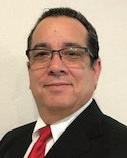
The USF SafetyFlorida Consultation Program offers free and confidential compliance assistance to Florida’s small, high-hazard, private-sector businesses. Other services include: On-site safety and health hazard assessments, including hazard recognition and prevention, Written program evaluations, Noise monitoring and air sampling, Comprehensive safety and health management system evaluations, Formal and informal training to include technical updates on OSHA standards and Trend analysis.
Contact us toll-free at (866) 273-1105 or visit usfsafetyflorida.com to schedule your FREE consultation today.
14
Feature II
Winfred Marrero Pagan, Sr., BCS, Health Consultant, USF SafetyFlorida
Poison Control
The Ugly Truth About Heat Illness
The National Oceanic and Atmospheric Administration (NOAA) ranked July 2021 as the hottest month on record, with July 2016, 2019, and 2020 tied for second. Along with the hot weather, studies have shown increased heat-related illnesses.

From 2004 through 2018, there were 702 average deaths annually; heat was an underlying factor in 415 and a contributing factor in 287, according to the Centers for Disease Control and Prevention (CDC). In 2021, ABC News reported that there are about 65,000 emergency room visits a year due to heat exposure, and in 2019 there were 6,800 ER visits in Florida alone, a 35% increase from 2010. The statistics are across all age groups and activities. Very young children and people over 65 are more prone to heat illnesses.
Heat illness occurs when the body’s core temperature rises, and the body can no longer get rid of excess heat. This can happen very quickly or slowly over several days of exposure. The effects range from mild symptoms, such as a headache, to long-term illness, including organ damage and death.
It's crucial, whether at work or home, to be familiar with the symptoms of heat illness – which most commonly occurs as heat cramps, heat exhaustion, or heat stroke. Someone in the early stages of heat illness – with a headache, for example – may not relate their symptoms to the heat and exertion and fail to respond, worsening their situation.
Heat cramps are caused by fluid and electrolyte imbalances, especially low sodium, and can be treated with massage and drinking electrolyte drinks. Heat exhaustion can be caused by fluid depletion or related to sodium deficiency. Symptoms can include headaches, confusion, or vomiting. Treatment involves cooling the person and replacing fluids and electrolytes if needed. If signs of
heat exhaustion last more than an hour, the person should be taken for medical treatment.
The most severe heat illness –heat stroke – occurs when the body temperature reaches 104 degrees or higher. During heat stroke, the body temperature can rise to 106 degrees in as little as 10 to 15 minutes. The person may exhibit confusion, loss of consciousness, seizures, slurred speech, dry skin, or profuse sweating. An immediate call to 911 should be made, and the person should be moved to a cooler location while waiting on an ambulance. Actions that should be taken while waiting on the ambulance include removing clothing, packing ice around the neck and groin, circulating air over the person, or dowsing with cold water when ice isn’t available.
Neil Gunter Safety Consultant, USF SafetyFlorida
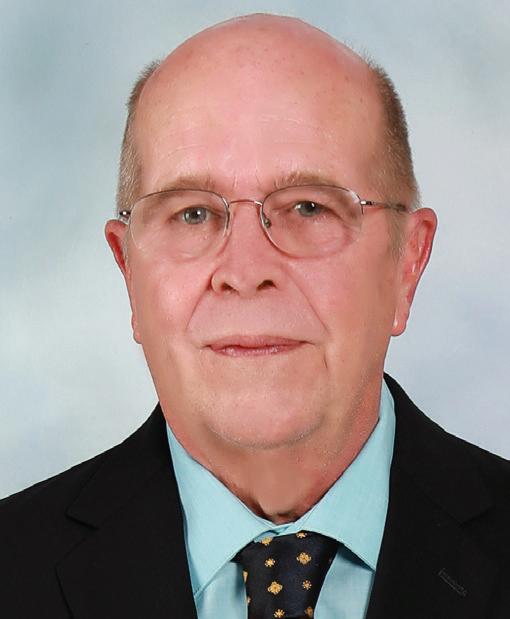
The main risk factors for heat illness are the heat load on the body and the physical exertion of a job. Other factors may include age, physical condition, required personal protective equipment, and whether a worker is acclimatized to the heat. Acclimating to the heat and work is accomplished by alternating work periods with rest periods in the shade until the worker is acclimatized. Personal risk factors that sometimes contribute to heat illness include medical conditions such as uncontrolled diabetes, high blood pressure, heart disease, and certain medications like tranquilizers, water pills, antihistamines, beta-blockers, laxatives, and drugs used to treat mental illnesses. The America Family Physician (AAFP.org) website contains an extensive list of personal risk factors.
The heat index, a measure of heat and humidity, determines when hot weather may be a problem. A more accurate Wet Bulb Globe Temperature (WGBT) measure accounts for direct solar radiation and wind speed and gives a more realistic idea of the risk. Your awareness level should increase when the heat index, or WGBT, rises. (Severe cases of heat illness occurred when the heat index was in the 80s.) Start by asking yourself how well you know your employees’ limitations and whether you have new workers who may not be acclimatized to working in the heat. Even if the answer is no, it pays to watch carefully and establish a buddy system where workers watch out for each other.
We’ve discussed the causes of heat illness, the signs and symptoms, the risk factors, and how to determine when the weather is a factor. The next step for employers involves control, prevention, and response strategies. Below are recommendations to help plan your work.
• When possible, schedule the work during a cooler time of the day.
• Use engineering controls when possible. This can be as simple as providing fans for increased ventilation, ensuring moisture-producing indoor spills are cleaned up, and shielding heat-producing processes.
15 USF SafetyFlorida ON-SITE
Feature III
• Provide shade and water or electrolyte fluids for break areas. Provide frequent breaks.
• Have a plan for worker acclimatization.
• Observe employees for lack of heat tolerance.
• Institute a buddy system.
• Ensure that all workers and supervisors are trained.
• Include details about heat-related illnesses in safety meetings and other employee communications.
Company policies should, at a minimum, include employee roles and responsibilities, signs and symptoms of heat illness, the risk factors, job planning, how to respond in emergencies, and training for employees.

Regulatory Update
OSHA entered the rulemaking process for heat-related illnesses in October 2021 by publishing an advance notice of a pending rule. OSHA addresses heat illnesses under a National Emphasis Program (NEP) for “Outdoor and Indoor Heat-Related Hazards.” NEPs are temporary programs that focus OSHA’s resources on high-hazard activities and industries.
Resources
Below are just some of the web resources (not already mentioned) that provide more information about the medical aspects and will help in developing a company plan.
• Websites for CDC and NIOSH
• OSHA/NIOSH Heat Safety Tool for Android
• OSHA/NIOSH Heat Safety Tool for iPhone
• OSHA Quick Card: Protecting Workers from Heat Stress
• OSHA Fact Sheet: Protecting Workers from the Effects of Heat
• OSHA Safety and Health Topic: Occupational Heat Exposure
Management, how involved are you?
Icould reference multiple sources regarding the importance of management involvement in a safety management system and developing a safety culture. However, sharing an experience would better get the point across.
I worked with a company years ago that had over ten recordable injuries, some of which included lost time. When I met the contact, they asked that I close the door so no one could hear our conversation. This was a “red flag” that something was amiss. The contact reluctantly communicated that several supervisors and managers could run their departments how they wanted,
and the owner did not enforce safety equally. I included this in my report and blamed upper management, which did not go well. I obliged when the owner wanted to speak to me regarding the report. During the meeting, I made it clear that injuries could continue to occur without upper management involvement and equal safety policy enforcement. Not only would this cause the company’s workers’ compensation cost and modification rate to increase, but it could also escalate the severity of the injuries. I immediately expected “pushback” but was surprised when I saw the look of acceptance and understanding on the owner’s face. We ended the meeting on a good note, and I thought that was the end of this story. However, a year later, the safety representative contacted me for another visit. I was unsure what to expect but was pleasantly surprised that the company had significantly updated the safety management system that, included equal enforcement of the company policy. As a result, the employer incurred two non-losstime injuries over the previous year.
David Ashman, PCG, PCC, Safety Consultant, USF SafetyFlorida

Can I take credit for the company’s turnaround? Of course not. I only identified the deficiency. The safety representative took the risk to speak up, and the owner chose to listen, which changed the company’s outlook on safety, resulting in a rapid, positive change.
So, my question to management, owners, and CEOs is, what are you doing?
• Are you giving total support by providing financial means and delegating authority to your safety representative or team?
• Do you require everyone to comply with safety policies?
• Are you involved in safety meetings and the safety committee?
• Are you personally following safety rules and leading by example?
• Do you have an open-door policy?
• Do you demonstrate concern for the welfare of your employees? If you need assistance and recommendations on improving your safety management systems and your role, request a FREE consultation from USF SafetyFlorida at https://www.tfaforms.com/4696809
16
IV
Feature
What We See
Our consultants are in the field daily, visiting small employers in high-hazard industries. From a hazard standpoint, we see it all. On this page are photos of hazards we have identified this year. More importantly, our consultants assisted these companies with correcting the hazards so their employees could work safely.
The boat maintenance and repair facility was not equipped with approved personal flotation devices, which could have resulted in drowning from slips, trips, and fall hazards.

Employees and equipment could easily break the ¼” plywood and fall to the floor below, causing severe injuries, including lacerations, fractures, and even death.
Struck by hazard, puncture wounds, broken bones, and other physical injuries. Employees should be briefed on safety hazards. The shovel should have been taken out of service. The safety requirement should have been added to the company’s safety checklist to prevent further occurrences.



17 USF SafetyFlorida ON-SITE
Noel McCatty Jr.
Gabe Garcia
Winfred Marrero Pagan Sr.
Noel McCatty Jr.
Employee conducting landscaping activities potentially exposed to hazards associated with high levels of noise and heat stress.
A portable extension ladder was observed set in place such that employees could access the sheet-metal roof of a shelter constructed to protect electrical equipment servicing the concrete batch plant. A collapsed A-frame portable ladder was also observed lying flat on the roof. Finally, a portable heater was mounted on the batch plant’s steel structure to prevent the concrete mix from freezing during cold weather days. Though employees were not observed on the ladders, based on the placement of the ladders and heater, a reasonable person could presume that employees are gaining access to the heater using the extension ladder to access the roof and then using the A-frame ladder to walk across the roof of the shelter to the heater. The height of the roof was over 4’, and there was no observed fall protection. Slipping or falling can result in bruises, lacerations, fractures, sprains, and possibly even death.
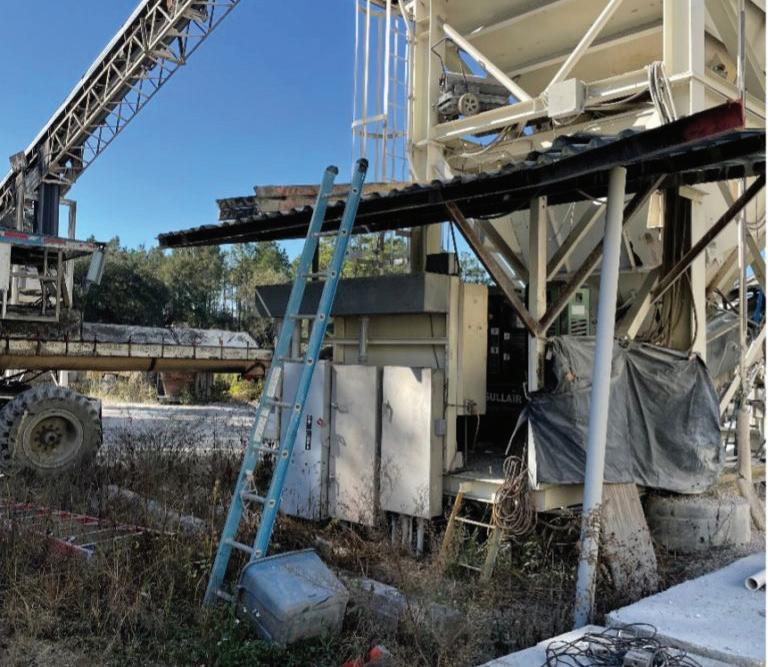
One of the most common safety hazards in the field is employers using worm-drive hose clamps to secure compressed air hoses to tool retainers. This type of connection is not designed for the pressure and service it is subjected to. Over time, tightening the clamp will cause it to dig into the hose material and compromise its structural integrity to the point that it can detach from the tool retainer. Injuries such as bruising, lacerations, or fractures from being struck by a whipping disconnected or ruptured hose.
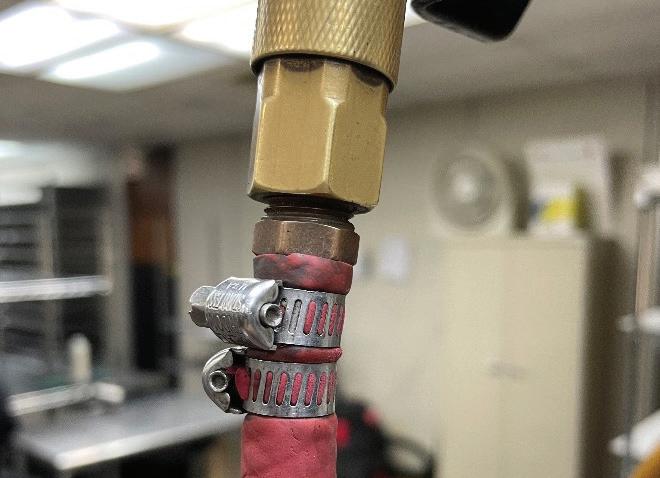
Sharps container in the blood laboratory was observed with needles extending above the “full line” of the container. Sharps containers should have been changed, and employees must be trained to ensure containers do not reach the full line. Make sure to provide approved, labeled, and color-coded sharps containers to discard contaminated sharps immediately or as soon as feasible.

The employer did not have an active permit, nor was the general contractor, who knew of the confined space, aware of this activity. The employee was only provided an oxygen sensor. Incorrect rescue equipment was being used. Flowing water could be heard in the space. The ladder did not reach the access point. A generator was running in proximity to the opening. If a competent person was present, they needed to fulfill their responsibilities. The supervisor/foreman for the company, which was present, knew a permit was required. Employees were huddled around the space, watching the employee working, suggesting that employees have not been properly trained or company policies are not being enforced.

18
Garrick Johnson
Luis Silva
Garrick Johnson David Ashman
SafetyWriter is good for you, and great for business!

“Employers who invest in injury and illness prevention programs can expect significant cost savings in addition to reducing fatalities, injuries, and illnesses. Workplace safety is not only the right thing to do for you workers; it’s the right thing to do for your business.” The SafetyWriter program enables small businesses to select safety plan components from a list of various menu options to customize a sitespecific safety plan that meets the needs of their business. The tailored plan may be accessed at any time, from any location, as it is a web-based application. Other options include downloading the plan for quick access. SafetyWriter is fast, quick, and free to use. Many countries have benefited from using USF SafetyFlorida’s SafetyWriter program. Join the masses to build or update your customized safety plan today!
For more information or to request a complimentary consultation, visit https://www.tfaforms.com/4696809 or call toll-free (866) 273-1105.
Streaming Library Services
USF SafetyFlorida prides itself on making small businesses safer and more productive. Our live-streaming service allows employers to provide training to small and large groups of employees. The safety training videos can be viewed from anywhere, at any time. The system is available to public and private sector employers, employees, Florida State Agencies, counties, municipalities, K-12, and higher education organizations. Our steaming service aids workers in gaining a better understanding of OSHA requirements and standards, provides effective training and education, and offers access to more beneficial resources. The knowledge and information received cost nothing, but the benefits are priceless. Our program has over 2,000+ safety and health titles in multiple languages from English, Spanish, French, Creole, and beyond.
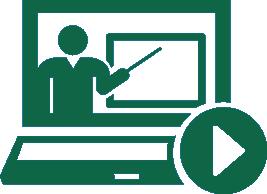
Let us help you streamline your training program!
Connect with us!
Facebook: https://www.facebook.com/USFSafetyFlorida/ LinkedIn: https://www.linkedin.com/company/usfsafetyflorida/ YouTube: https://www.youtube.com/channel/UCqYhihWb0YtuYQZXzwpM-1Q

Stay in the loop and get the latest updates from USF SafetyFlorida. We strive to create a space where weshare OSHA campaigns, free outreach training opportunities dedicated to small business employers and employees, highlighting hazards and industries that pose a particular risk to workers, and the latest and greatest in the world of occupational-related safety and health.
Our e-newsletters are only four times a year, sharing things you will want to learn about, like new and revised OSHA standards and free outreach training opportunities.

Sign up now by visiting usfsafetyflorida.com.

19 USF SafetyFlorida ON-SITE
Consulting • Training • Education
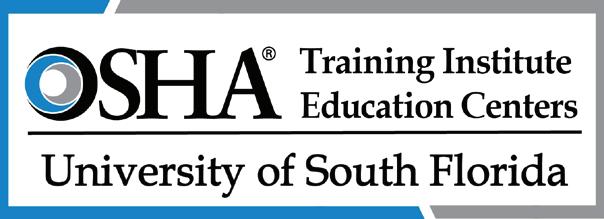

USF SafetyFlorida Consultation Program’s primary purpose is to help your company prevent work-related fatalities, injuries and illnesses. In the short term, we do that by emphasizing hazard identification. In the long term, we do that by helping you develop a safety management program.

Our strategies give you the results you’re looking for. If you are ready to take the next step towards safety in your business, contact us today to request a free and confidential safety consultation.
On-site Consultation
USF SafetyFlorida offers free and confidential safety and occupational health advice to small and medium-sized businesses, with priority given to high-hazard worksites. Our consultants work with employers to identify workplace hazards, provide advice on compliance with OSHA standards, and assist in establishing injury and illness prevention programs.

Training & Education
The OTI Education Center provides training and education on occupational safety and health subjects for federal and state compliance officers, state consultants, other federal agency personnel, and the private sector.
Online Management Tool Award Programs

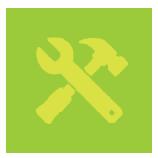

SafetyWriter, an online safety management tool developed by USF SafetyFlorida helps companies customize a written safety and health management program without the guesswork.
USF SafetyFlorida rewards small businesses who demonstrate strong, effective safety cultures with the opportunity to receive either the SHARP (from the OSHA national office) or the Sunshine State Safety Award (exclusively for Florida’s small businesses).
20
21,874 Identified over 1,438 occupationally related serious hazards in FY 2022
A total of 21,874 employees were removed from hazardous environments
1,400+
$20MM
The number of companies that received the USF SafetyFlorida Sunshine State Safety Award This award is given to Florida employers and employees in all industries who proactively and routinely engage in job safety

12,700+
Marketed our USF SafetyFlorida’s consultative services through our electronic newsletter to more than 12,749 subscribers

21,000+
Facilitated training for 21,069 workers through DVDs, streaming videos and informal training during the consultation
$20MM
Total Economic Value to FL Small Business, including in/direct cost of injuries prevented and the workers compensation value of injuries prevented
7
The number of Florida establishments that have earned the prestigious Safety and Health Achievement Recognition (SHARP)
21 USF SafetyFlorida ON-SITE By The Numbers
Approximately 20 million in potential OSHA enforcement penalties avoided by small businesses with the assistance of the consultation program 13
Who We Are
Consultation Staff:
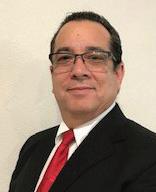








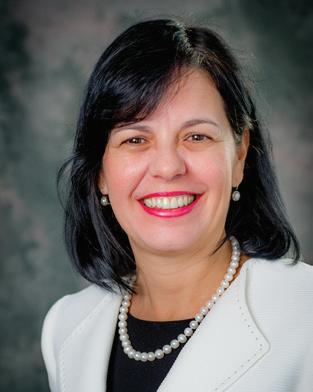

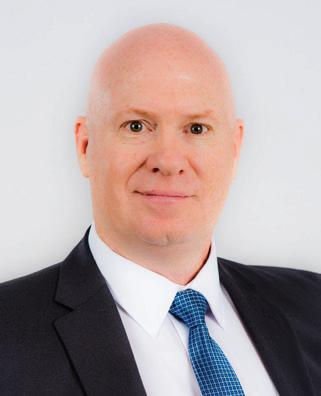




Management:

22
1. Brian Warrick, Ph.D., CSP, CIH – Program Director
2. Keila Ashman, MPH – Assistant Program Director
1 2 1 2 4 3 5 6 8 7 9 11 10 12 13 14
1. David Ashman, PCG, PCC – Safety Consultant
2. Thalia Barber, BS – Communications & Marketing Officer
3. Miriam Escobar, MSPH, MA, CSP – Health Consultant
4. Alejandro Fernandez, Staff Assistant
5. Gabe Garcia, PCG, PCC, PCM – South Regional Manager
6. Nicholas Girod – Communications & Marketing Specialist
7. Neil Gunter – Safety Consultant
8. Garrick Johnson, MSPH, CIH – Central Regional Manager
9. Winfred Marrero Pagan, Sr., BCS – Health Consultant
10. Noel McCatty, Jr. – Safety Consultant
11. Linette Pruna Padilla, MSIH – Health Consultant
12. Clarence Rodrigues, Ph.D., PE, CSP, CPE
–
Safety and Health Consultant
13. Luis Silva – Health Consultant
14. William Tomlin – North Regional Manager
13201 Bruce B. Downs Blvd.
Tampa, FL 33612
Toll-free: 1-866-273-1105
Phone: 813-974-9962
Fax: 813-974-8270
www.usfsafetyflorida.com


Reading this code with your smartphone, using QR code scanning software such as http://web.scanlife.com/en/downloadapplication, will enable you to go directly to the USF SafetyFlorida website.

23 USF SafetyFlorida ON-SITE NON-PROFIT ORG. U.S. POSTAGE PAID TAMPA, FLORIDA PERMIT # 236
MLK Plaza






























































































